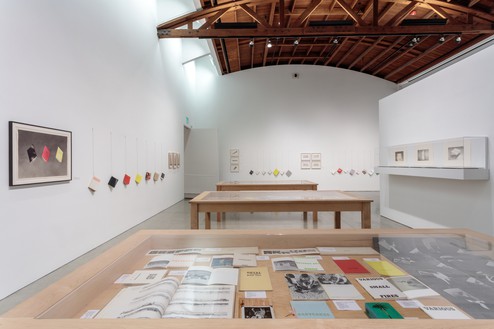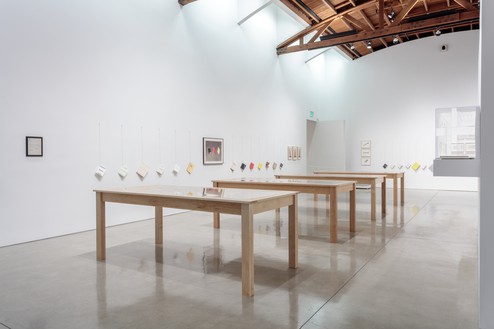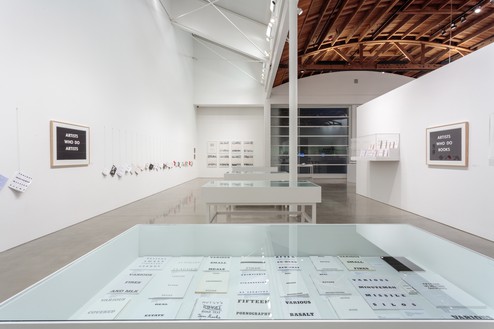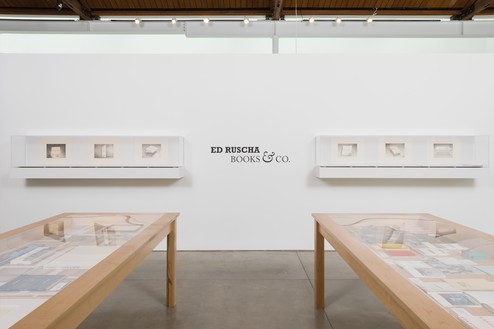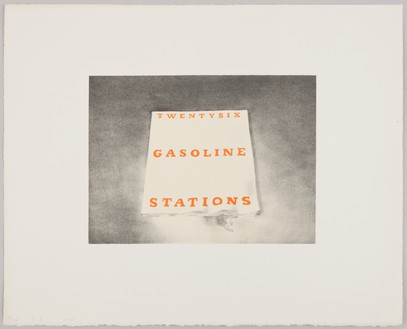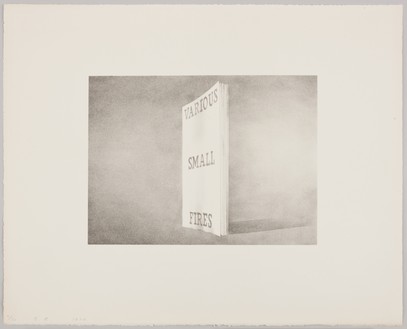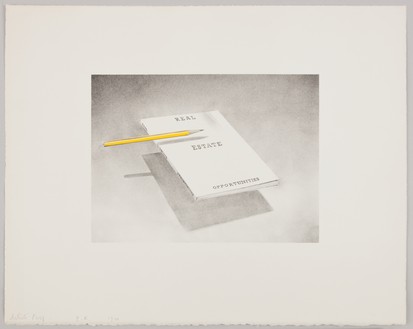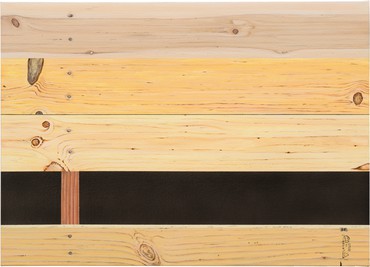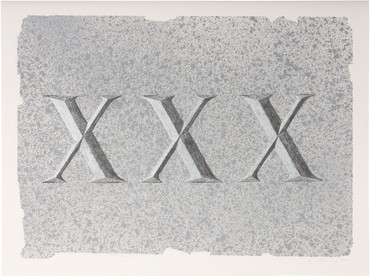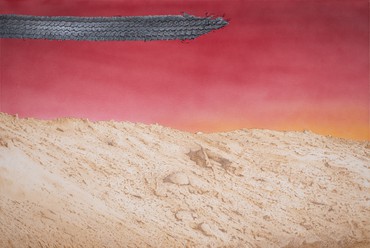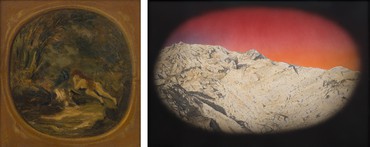About
Gagosian is pleased to present Ed Ruscha Books & Co., an exhibition of artists’ books by and after Ed Ruscha. The exhibition is organized by Gagosian director Bob Monk. The exhibition will be presented in conjunction with Ed Ruscha Prints and Photographs.
In the 1960s, Ruscha was credited with reinventing the artist’s book, producing and self-publishing a series of slim volumes of photography and text. By turning away from the craftsmanship and luxury status that typified the livre d’artiste in favor of the artistic idea or concept, expressed simply and in editions that were unsigned and inexpensively printed, Ruscha opened the genre to the possibilities of mass-production and distribution. Ed Ruscha Books & Co. presents Ruscha’s iconic books together with those of more than one hundred artists from all over the world—from Russia to Japan to the Netherlands—who have responded directly and diversely to his lead. Many books are installed so that viewers can browse their pages. After presentations in New York, Munich, and Paris (2013–15), the exhibition run concludes in Ruscha’s home city of Los Angeles.
Inspired by the unassuming books that he found in street stalls during a trip to Europe, Ruscha published his first artist’s book, Twentysix Gasoline Stations, in 1962 under his own imprint, National Excelsior Press. Priced at $3.50, it is exactly what its title suggests: twenty-six photographs of gas stations with captions indicating brand and location. Initially, the book was received with indifference, and it was even rejected by the Library of Congress for its “unorthodox form and supposed lack of information.” However, over time it acquired cult status, and by the 1980s it was hailed as one of the first truly modern artist’s books. Ruscha followed this up with a succession of similarly self-evident and deadpan photographic books chronicling aspects of Los Angeles or his round-trip drives between Los Angeles and Oklahoma, including Some Los Angeles Apartments (1965), Nine Swimming Pools and a Broken Glass (1968), and Real Estate Opportunities (1970). Their use of photography as a form of map-making or topographical study signals a conceptual, rather than documentary, thrust.
This year marks the fiftieth anniversary of one of Ruscha’s most iconic artist’s books, the 25-foot-long, accordion-folded Every Building on the Sunset Strip (1966). The past half century has seen the importance and meaning of this book expand and evolve, pulled into new light by changing historical contexts, yet always retaining an enigmatic influence over new generations of artists. Ruscha’s artist’s books have been deeply influential on his peers and followers—from Bruce Nauman’s Burning Small Fires (1968), in which Nauman burned a copy of Ruscha’s Various Small Fires and Milk (1964) and photographed the process, to Julie Cook’s Some Las Vegas Strip Clubs (2008), which turns the lights up on some nocturnal haunts.
Share

Flags
Gillian Pistell writes on the loaded symbol of the American flag in the work of postwar and contemporary artists.
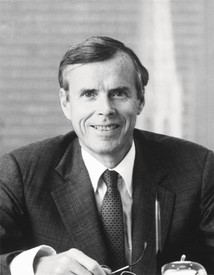
Donald Marron
Jacoba Urist profiles the legendary collector.
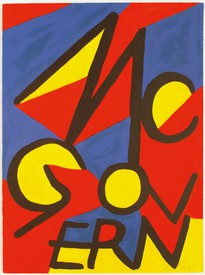
The Art History of Presidential Campaign Posters
Against the backdrop of the 2020 US presidential election, historian Hal Wert takes us through the artistic and political evolution of American campaign posters, from their origin in 1844 to the present. In an interview with Quarterly editor Gillian Jakab, Wert highlights an array of landmark posters and the artists who made them.
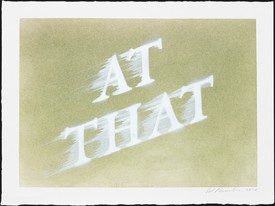
“Things Fall Apart”: Ed Ruscha’s Swiped Words
Lisa Turvey examines the range of effects conveyed by the blurred phrases in recent drawings by the artist, detailing the ways these words in motion evoke the experience of the current moment.

Artists’ Magazines
Gwen Allen recounts her discovery of cutting-edge artists’ magazines from the 1960s and 1970s and explores the roots and implications of these singular publications.
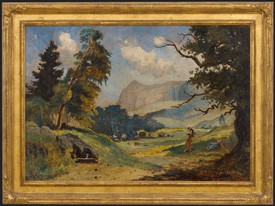
Eilshemius and Me: An Interview with Ed Ruscha
Ed Ruscha tells Viet-Nu Nguyen and Leta Grzan how he first encountered Louis Michel Eilshemius’s paintings, which of the artist’s aesthetic innovations captured his imagination, and how his own work relates to and differs from that of this “Neglected Marvel.”
News
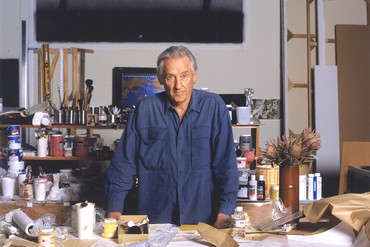
Artist Spotlight
Ed Ruscha
September 16–22, 2020
At the start of his artistic career, Ed Ruscha called himself an “abstract artist . . . who deals with subject matter.” Abandoning academic connotations that came to be associated with Abstract Expressionism, he looked instead to tropes of advertising and brought words—as form, symbol, and material—to the forefront of painting. Working in diverse media with humor and wit, he oscillates between sign and substance, locating the sublime in landscapes both natural and artificial. Ruscha’s formal experimentations and clever use of the American vernacular have evolved in form and meaning as technology alters the essence of human communication.
Photo: Kate Simon

galleryplatform.la
Ed Ruscha
Drum Skins
May 28–June 30, 2020
Gagosian is pleased to present recent paintings by Ed Ruscha online for galleryplatform.la. Fifty years ago, Ruscha purchased a set of vellum drum skins from a leather shop in Los Angeles. He has continued to collect these vintage objects, and since 2011 he has used them as canvases for the works on view in his solo exhibition Drum Skins at the Blanton Museum of Art at the University of Texas at Austin.
Installation view, Ed Ruscha: Drum Skins, Blanton Museum of Art, University of Texas at Austin, January 11–October 4, 2020. Artwork © Ed Ruscha


